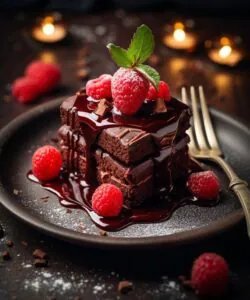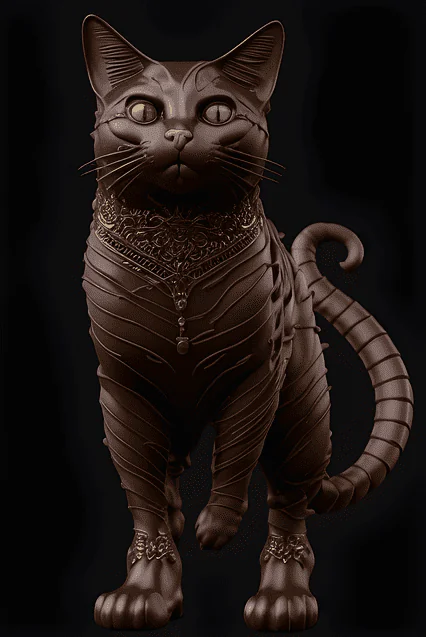
Beyond Bitter:
The world of fine chocolate is a realm of artistry, precision, and passion. Beyond the common perception of chocolate as a simple sweet treat lies a sophisticated craft that transforms bitter cacao beans into exquisite delicacies. This article delves into the intricate process of creating fine chocolate, exploring the journey from bean to bar, the techniques and skills required, and the dedication of artisans who strive for perfection. Join us as we uncover the secrets behind the art of crafting fine chocolate, where every bite is a testament to expertise and devotion.
The Journey of Cacao: From Pod to Bean
The journey of fine chocolate begins in the lush, tropical regions where cacao trees flourish. These trees produce large pods, each containing 20 to 40 cacao beans. Harvesting these pods is a labor-intensive process, typically done by hand to ensure only the ripest pods are selected. Once harvested, the pods are opened, and the beans are extracted.
The beans are then fermented, a critical step that develops the complex flavors of the chocolate. Fermentation involves placing the beans in shallow containers, covering them with banana leaves, and allowing natural yeasts and bacteria to transform the beans over several days. This process breaks down the beans’ sugars and generates heat, which is essential for flavor development.
After fermentation, the beans are dried, usually under the sun, to reduce their moisture content and prepare them for further processing. Proper drying is crucial, as it prevents mold growth and preserves the beans’ quality. Once dried, the beans are ready to be shipped to chocolate makers around the world.
Roasting and Cracking: Unlocking Flavor Potential
Roasting is a pivotal stage in chocolate making, as it enhances the beans’ flavors and aromas. The beans are roasted at precise temperatures, with the duration and temperature varying depending on the desired flavor profile. This step requires a keen understanding of the beans’ characteristics and the ability to fine-tune the process to achieve optimal results.
After roasting, the beans are cracked and winnowed to separate the nibs (the edible part of the bean) from the husks. Winnowing involves passing the cracked beans through a series of sieves and air currents to remove the unwanted husks. The resulting nibs are the pure essence of cacao and are ready for grinding.
Grinding and Conching: Refining the Texture
The grinding process transforms the nibs into cocoa mass, also known as chocolate liquor. This thick paste consists of both cocoa solids and cocoa butter. Further refining is achieved through conching, a process that involves continuous mixing and aeration of the cocoa mass at controlled temperatures. Conching can last from several hours to several days, depending on the desired smoothness and flavor development.
Conching not only refines the texture but also allows volatile acids and undesirable flavors to dissipate, resulting in a more balanced and palatable chocolate. The addition of ingredients like sugar, milk powder, and additional cocoa butter occurs during this stage, depending on the type of chocolate being produced.
Tempering: Achieving the Perfect Snap and Shine
Tempering is the final step in crafting fine chocolate, ensuring it has a glossy finish and a satisfying snap. This process involves carefully controlling the temperature of the chocolate to form stable cocoa butter crystals. Proper tempering aligns these crystals, giving the chocolate its characteristic sheen and texture.
Chocolate is first melted to break down any existing crystals, then cooled to allow new crystals to form. It is then gently reheated to a precise temperature to eliminate any unstable crystals. This meticulous process requires skill and precision, as even slight deviations can result in chocolate that is dull or prone to blooming (a whitish coating that forms on the surface).
The Art of Flavor Creation: Balancing and Blending
Creating fine chocolate is as much about artistry as it is about science. Master chocolatiers skillfully balance and blend different cacao beans to achieve unique and harmonious flavor profiles. Single-origin chocolates highlight the distinct characteristics of beans from specific regions, while blends combine beans from various origins to create complex and layered flavors.
Artisans experiment with different roasting profiles, conching times, and ingredient ratios to craft chocolates that are truly one-of-a-kind. The art of flavor creation extends beyond the basics, incorporating ingredients like spices, fruits, and nuts to add depth and variety. Each batch of fine chocolate is a testament to the chocolatier’s creativity and expertise.
Sustainability and Ethics in Chocolate Making
The world of fine chocolate is increasingly focused on sustainability and ethical sourcing. Many chocolatiers are committed to supporting fair trade practices, ensuring that cacao farmers receive fair compensation for their labor. Sustainable farming practices are also emphasized to protect the environment and maintain the health of cacao-growing regions.
Ethical chocolate making involves transparency and traceability, allowing consumers to understand the origins of their chocolate and the conditions under which it was produced. By choosing ethically sourced chocolate, consumers can enjoy their indulgence with a clear conscience, knowing they are supporting a positive impact on both people and the planet.
The Future of Fine Chocolate: Innovations and Trends
The art of crafting fine chocolate continues to evolve, with innovations and trends shaping its future. Bean-to-bar movements emphasize small-scale production, where chocolatiers control every step of the process from sourcing to packaging. This approach allows for greater creativity and quality control, resulting in unique and artisanal chocolates.
Technological advancements are also playing a role in refining chocolate making techniques. Precision equipment and scientific research are helping chocolatiers understand and manipulate the properties of cacao to create even more refined and exquisite products.
Trends such as vegan and organic chocolates are gaining popularity, catering to health-conscious consumers and those with dietary restrictions. Additionally, the exploration of new and exotic flavor combinations keeps the world of fine chocolate exciting and dynamic.
Conclusion
The art of crafting fine chocolate is a delicate balance of tradition, innovation, and passion. From the careful selection of cacao pods to the meticulous tempering process, every step is executed with precision and dedication. Fine chocolate is more than just a treat; it is a reflection of the artistry and expertise of those who create it. As you savor each piece, remember the journey it undertook and the hands that shaped it, transforming bitter beans into a symphony of flavors. Embrace the world of fine chocolate and indulge in the exquisite art that lies beyond the bitterness.

